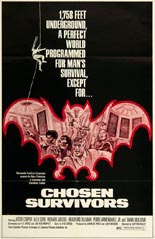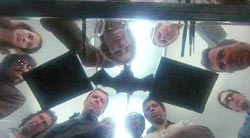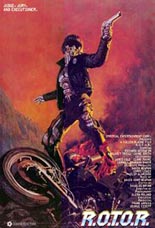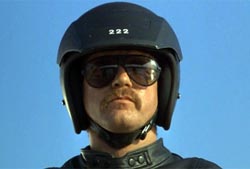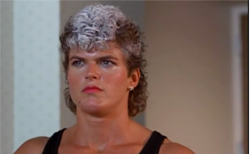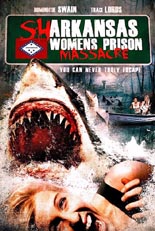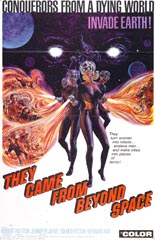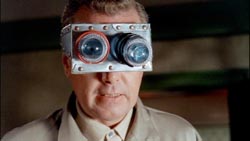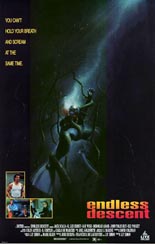
 At the tail end of the ’80s, what was in the Hollywood water supply that caused a wave of waterlogged movies? That pool included The Abyss, Leviathan, DeepStar Six and — at the bottom, floating just above the Roger Corman-funded Lords of the Deep — Juan Piquer Simón’s Endless Descent, aka The Rift.
At the tail end of the ’80s, what was in the Hollywood water supply that caused a wave of waterlogged movies? That pool included The Abyss, Leviathan, DeepStar Six and — at the bottom, floating just above the Roger Corman-funded Lords of the Deep — Juan Piquer Simón’s Endless Descent, aka The Rift.
After the Siren experimental submarine disappears with no word from those aboard, its lion-maned designer, Wick Hayes (Jack Scalia, Wes Craven’s Red Eye), is called upon by a concerned Pentagon to join the crew of the Siren 2 to seek closure. With Capt. Phillips (Tom Hanks R. Lee Ermey, The Texas Chainsaw Massacre: The Beginning) calling the shots and Robbins (Ray Wise, Jeepers Creepers II) navigating, the Siren 2 picks up a signal from the black box of the original-recipe Siren — or Syren, depending upon the prop — located some 20,000 feet below in a rocky crevice — a rift, one might say. Between here and there grows giant seaweed, a sample of which is requested by the sub’s resident biogenetics expert (Deborah Adair, TV’s Dynasty).
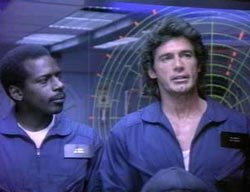 Compliance proves to be a very bad idea for the Siren 2 crew, but a good one for Endless Descent, as it allows Simón to get to the face-melting, skin-bubbling and other icky results of mucking with underwater flora. Further problems befall Hayes and company when they investigate the signal’s source: a cave that may as well be an alien world, what with the giant tentacled starfish and all the creatures aggressively popping from holes in the wall like the babies of a Surinam toad; the trypophobic may want to skip this section, although it’s the film’s best.
Compliance proves to be a very bad idea for the Siren 2 crew, but a good one for Endless Descent, as it allows Simón to get to the face-melting, skin-bubbling and other icky results of mucking with underwater flora. Further problems befall Hayes and company when they investigate the signal’s source: a cave that may as well be an alien world, what with the giant tentacled starfish and all the creatures aggressively popping from holes in the wall like the babies of a Surinam toad; the trypophobic may want to skip this section, although it’s the film’s best.
For such a transparent purloining of Ridley Scott’s Alien, this Descent could have been much worse. Unlike Simón’s previous works, it appears to have a semi-healthy budget, so that the special effects actually work, rather than detract. It also, amazingly, has as much in common with Prometheus, Scott’s 2012 Alien franchise restarter, than it does his 1979 original. As always, Wise makes the most of his role, giving the B material his capital-A all; as always, Ermey and his Angry Birds-friendly eyebrows do the Ermey thing, which is to say a one-note-off rehash of his iconic performance as the nightmarish drill instructor in Stanley Kubrick’s Full Metal Jacket. Despite being the ostensible “star,” Scalia is a nonentity. —Rod Lott

